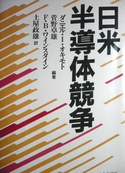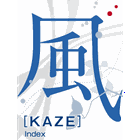>>その1
日本にかわって、その立場を世界へ説明
1974年、オキモトは、博士論文を書くために再び来日して、東大社会科学研究所に研究員として約2年間在籍した。75年4月の「トーク・ショー」は、その時に行われた対談である。対談は彼の専門である日本の政治がテーマで、高校生の私には英語も内容も高度で、番組を見た後、文字に書き起こされたNHK のテキストを辞書を引きながら読んで、何とかフォローするのがやっとだった。
オキモトは、日本の政界にみられる閨閥、つまり血縁関係について具体的な数字を挙げながら、そのユニークさを説明した。当時の自民党の衆議院議員279 人のうち、30%近い75人が閨閥でできている。それも、従妹や姻戚関係を含まない、1、2等親までの近い親戚だけを数えてその数字となり、アメリカでは絶対にありえないと力説した。ちなみに、最近の調査でも、自民党の世襲率は35%と高く、民主党は14%である。閨閥という横のつながりを含めれば比率はもっと高くなるだろう。
対談はさらに、日本で世襲議員が横行する理由、閨閥と派閥との関係、自民党の性質など、興味深い話題へと進んだ。
自民党について、オキモトは、予測しない事態に対処するためのきめ細かい原則も規律規範のたぐいもない、そのときどきの臨機応変的な組織だという。中核のない、アメーバ構造だが、いざという時には柔軟に対応して効果的な決定がなされる。これを理解するには欧米の理論だけでは不可能で、派閥間、あるいは派閥内部の微妙な人間関係を方程式に組み込まなければならないという。
オキモトが滞日していた1974年、田中角榮首相がスキャンダルの疑惑の高まりの中で辞任を余儀なくされ、三木武夫首相が誕生したが、知日派の彼でさえ、このときは自民党も終わりだと思ったらしい。あれからさらに自民党は35年も幾多の困難を乗り切り、政権党であり続けた。それが今年、瓦解したわけだから、オキモトにとってはまさに「大地震」に映ったのだろう。
このNHKの対談で彼はまたこんなことを言っている。
「私は今日本の外交政策を調べているところですが、いつも感に堪えないのは、日本が誤解を引き起こさないために、自分の立場を外国に説明する必要がいかに大きいか、ということなんです。西ヨーロッパやアメリカはそんな必要がないんですが、日本はさまざまな理由からぜひそうしなくてはならない。(中略)日本を対象としている研究者にとって経済学の知識は欠かせません。日本で何がおきているかを巨細に理解しようと思ったら、国内と国際、双方の経済学に通じていることは絶対不可欠なんです」
オキモトが、自分の専門を「国際政治経済」としている理由は、まさにここにあるのだろう。一分野の学問だけで日本を知ることはできない。政治も経済も、さらには歴史、社会学、心理学、言語学も大切だと彼はいう。
オキモトは、この対談が行われた2年後、1977年にミシガン大学で博士号を取得し、その後、スタンフォード大学で教鞭をとるようになる。80年代になると、日本や日米関係に関するさまざまな出版物を世に問い、日本が自分の国を世界に説明していく責任を、日系アメリカ人である彼が果たしている。まさに日米の架け橋である。
アメリカとの間を結ぶ数々の功績
1984年に共同研究として発表した Competitive Edge: The Semiconductor Industry in the U.S. and Japan(邦題『日米半導体競争』)は、各分野の専門家を擁して、日米双方の立場を政治、経済、社会、技術の観点から半導体をめぐる問題を論じている。オキモトは政治的側面の章を担当し、日米の半導体産業の政府の役割を分析した。
半導体の分野で日本の進出が目覚しくなり、ともするとアメリカの脅威ともなりかねなかった80年代、特に日本の立場を明確に説明しなくてはならないとオキモトは考えたのだろう。
89年に出版されたBetween MITI and Market(邦題『通産省とハイテク産業』)では、日本の半導体産業の研究をさらに深めながら、通産省、政府、そして産業界の複雑な関係を分析した。日本は国家が強力なリーダーシップをとっているのではなく、産業界の積極的な協力が国家を強くしており、公共利益と民間利益を結びつける広範囲なネットワークがある。その意味で、日本は、日本株式会社というより、関係重視型国家、あるいは、ネットワーク型国家、と呼ぶのがふさわしいとオキモトは説く。
現在、スタンフォード大学の名誉教授であるオキモトは、同大学30年の在籍中に、アジア太平洋研究センターを共同で創設し、スタンフォード日本センター設立にも中心的な役割を果たした。
日本との関わりも深い。1999年から、日本政策投資銀行の顧問をしている。また、同年に日経新聞社主催の「日経フォーラム 世界経営者会議」が開かれたときには、「グローバル経営におけるインターネットのインパクト」というパネル討論の司会者を務めた。日米国交開始150周年にあたる2004年には、日米交流の促進への功績が認められて、外務大臣賞を受賞している。
オキモトが考える、日米のあるべき姿とは?
半導体産業を中心としてオキモトが盛んに日本の説明責任を果たしたのは、安定した自民党政権があり、日本の経済が元気だった1980年代のことだった。
この20年で世界の経済は大きく様変わりし、日本の代わりに中国や台湾、韓国などのアジア諸国が台頭している。半導体産業も思わしくない。80年代後半に世界の市場の51%を占めた日本のシェアは、今や20%に落ち込んでいる。もう一人の知日派日系人であるグレン・フクシマは、半導体の用途が安定しているときは大量生産、コストダウン、品質改善を得意とする日本のやり方が有効だが、情報技術の進歩が加速し、用途も不確定な時代にはシリコンバレー的なベンチャー精神が有利になる。情報通信向けの半導体の利用法がはっきりしてきたら日本の半導体産業はよみがえる、と述べている。
オキモトは、日本が再生するには、輸出依存体質から脱却する必要があるという。進み行く高齢化と貯蓄率の低下を考えると、国内需要が拡大する可能性がある。そのとき、世界最高レベルの病院、高齢者用施設、製薬会社などの医療、健康管理部門は、日本の経済成長の有力なテコになるという。
また、2008年9月のリーマンショックで世界経済全体を不況に陥れたアメリカについては、国内総生産の7%を占める軍事予算を5%まで減らす必要があると述べている。それによって生まれる予算の余剰を高速鉄道など建設的なインフラや、クリーンテクノロジー、代替エネルギーの開発などに回せれば、アメリカ経済だけでなく、世界全体の安定につながるという。
アメリカはオバマ政権になり、駐日大使にジョン・ルースというカリフォルニア州出身の弁護士が選ばれたが、オキモトはルースと長年の付き合いがあり、ブレイン的な存在である。
日本のアメリカへの代弁者として、あるいは逆にアメリカの日本への代弁者としてオキモトにはまだまだ活躍してもらいたい。だが、オキモトに続く若手の日系人研究者が現れてほしいとも思う。
高校生の時に「トーク・ショー」でオキモトを見てから35年。とびきり優秀な日系人の若手研究者に國弘正雄はエールを送り、私も折に触れて、同じ学問を歩んでいる首都大学の友人から彼の名前を聞いていた。政治と経済の「大地震」で日本もアメリカも元気をなくしている今こそ、日米双方の立場に立てる、あるいはその中間にいる日系人研究者の声に耳を傾けたい。
(敬称略)
※本文中の訳は國弘正雄著『語り合う現代(上)』より引用。
ダニエル・オキモトの著作(日本語に訳されているもの)
* 『仮面のアメリカ人―日系二世の米国観と日本観』サイマル出版会1971
American in Disguise, John Weatherhill, 1970
* 『通産省とハイテク産業』サイマル出版会 1991
Between MITI and Market, 1989
共著
* 『日米半導体競争』中央公論社 1985
Competitive Edge: The Semiconductor Industry in the U.S. and Japan, Stanford Univ Press, 1984
参考資料
* 『語り合う現代(上)』 國弘正雄 日本放送出版教会 1977
「トーク・ショー」を日本語に訳したもの。上下2巻で22編が選ばれている。
*本稿は、時事的な問題や日々の話題と新書を関連づけた記事や、毎月のベストセラー、新刊の批評コラムなど新書に関する情報を掲載する連想出版のWebマガジン「風」 のコラムシリーズ『二つの国の視点から』第8回目からの転載です。
© 2009 Association Press and Tatsuya Sudo








